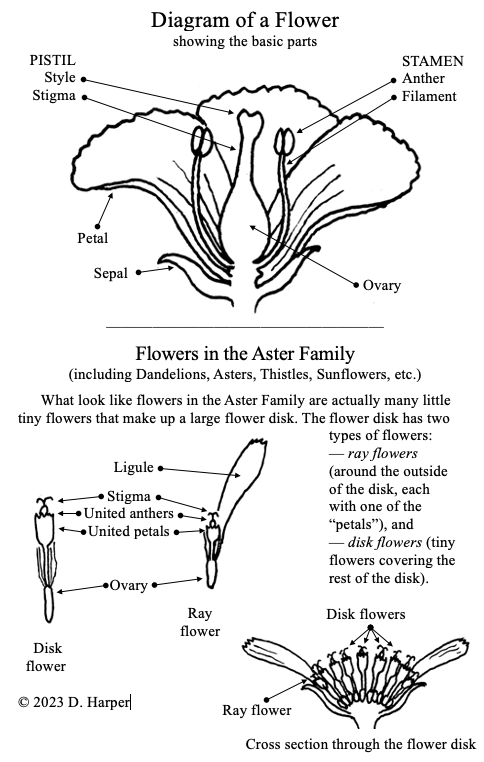A “moment for all ages” at First Parish in Cohasset, (c) 2023 Dan Harper. I didn’t follow this text exactly, but it will give you the general idea.
Moment for all ages: “Looking at Flowers”
The children and youth may come forward now if you wish, and if you brought a flower today, bring it along.
If you brought a flower to share, you can put it in one of the vases on the table. (And if you didn’t bring a flower, here are some extras so you can have one to put in a vase.) The adults are going to do this, too. You people get to go first because you’ll want your hands free so I can give you another flower. You’ll see why you want a different flower in just a moment.
[Hand out flowers that can be dissected]
Often we look at a flower and say, Wow, isn’t that pretty. The color or the shape of the flower catches our eyes, or maybe we admire the scent. Well, I’m going to try to convince you that a flower is a whole lot more than that.
Look closely at the flower I handed you. Now look at the diagram I gave you, and see if you can find the different parts of the flower.
Let’s start with the petals and sepals. See those?
Now let’s look at the tiny parts of the flower. Use a magnifying glass if you want. The pistil is in the middle, and it’s made up of the style and the stigma. The stamens are around the center, and they’re made up of anthers, which are held up by filaments. That structure down at the bottom is the ovary. If you want to, you can take off some of the petals so you can see the inside better (this is why I gave you these flowers, so you can pull them apart).
The stamens produce pollen. The pistil takes the pollen that the stamens produce, and send it down to the ovary. The ovary is the part that turns into a seed.
So how does the pollen get from the pistil to the stamen? Depending on the flower, the pollen can be transferred by an insect such as a bee; or a bird or a bat or another animal; or sometimes by wind or water.
When an insect like a honey bee or a bumble bee comes to a flower, they are not looking for pollen. They are looking for nectar. Usually the flower stores the nectar deep inside the flower, at the base of the ovary. That way, the insect has to crawl all the way into the flower to get the nectar reward, which makes it more likely to get pollen on it. So the bee gets the nectar reward, and in return the bee helps the flower get pollinated. Look at your flower and imagine how a bee would spread the pollen around while getting its nectar reward.
If you get a chance, try sitting outside and watching a flower to see what insects come visit it. (If you stand a couple of feet away from the flower, and don’t make any sudden moves, the bees won’t sting you; they’re too busy getting nectar.) There are dozens of different kinds of bees: from bumble bees, which are pretty big, to tiny little sweat bees that are bright green in color. When you look closely, each flower is like a miniature world.
But what’s really fascinating is that bees need flowers so they can make honey from the nectar. And flowers need bees to move the pollen from stamen to pistil. This is yet another example of the interconnected web of all existence.
If you want to keep looking at your flower you can take it with you. But please leave the magnifiers here. And now you return to sit with your families again.
